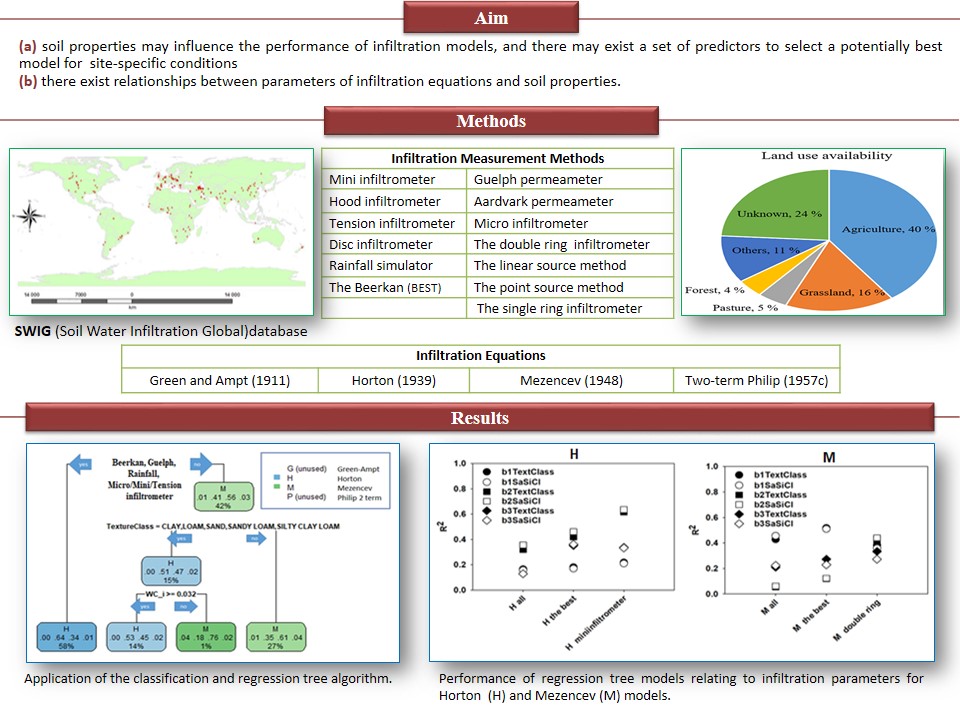Rev. Bras. Ciênc. Solo.2022;46:e0210147.
Parameters of infiltration models affected by the infiltration measurement technique and land-use
01/Jun/2022
DOI: 10.36783/18069657rbcs20210147
Graphical Abstract

Highlights
Soil structure attributes may be predictors of infiltration models’ parameters.
Regression trees algorithm was applied to the SWIG database.
Measurement technique and land use are the most effective attributes.
Horton and Mezencev models outperformed.
These attributes are useful for selecting the best infiltration equations.
ABSTRACT
The measurement method (MM) and the land-use (LU) are two soil structure-related attributes that are available in infiltration experiments. This study aims to hypothesize that measurement technique and land-use might be good predictors of the performance of infiltration parameter values and models. The Soil Water Infiltration Global (SWIG), which includes about 5000 experiments worldwide and assembled in the Institute of Agrosphere in Jülich, Germany, was used. Except for the known properties such as texture, measurement method, and land-use, changes were observed in organic carbon content, saturated hydraulic conductivity, bulk density, pH, initial water content, and the electrical conductivity of saturated paste. Horton and Mezencev models outperformed from Green and Amp and Two-term Philip models, hence it has been seen that Horton and Mezencev models could be preferred according to the measurement method. To determine the most influential predictors of these two models’ parameters, the machine learning method “regression trees” was applied. In 80 % of cases for both models, the textural class, the MM (40 % of cases), and the LU were found as the most influential predictors. The accuracy of parameter estimates increased when a subset of measurements was used with the same method to estimate infiltration parameters. Textural class, LU, bulk density, and K sat were determined as the most influential predictors for the parameters of the Horton. However, textural class, LU, and organic carbon content became most important in the case of the Mezencev model. Overall, estimates of the infiltration equation parameters can be more accurate if they have been developed for the same MM as in the task at hand. The MM and the LU provide useful surrogate information about the effect of soil structure on infiltration.
299

